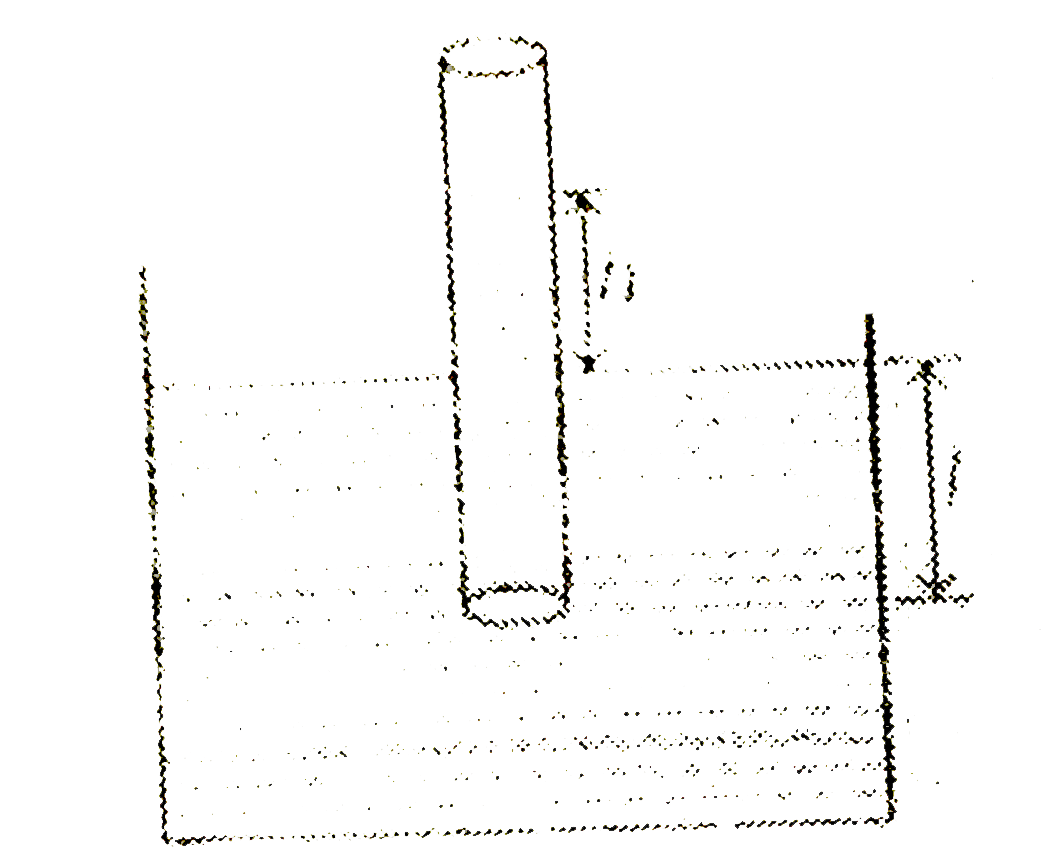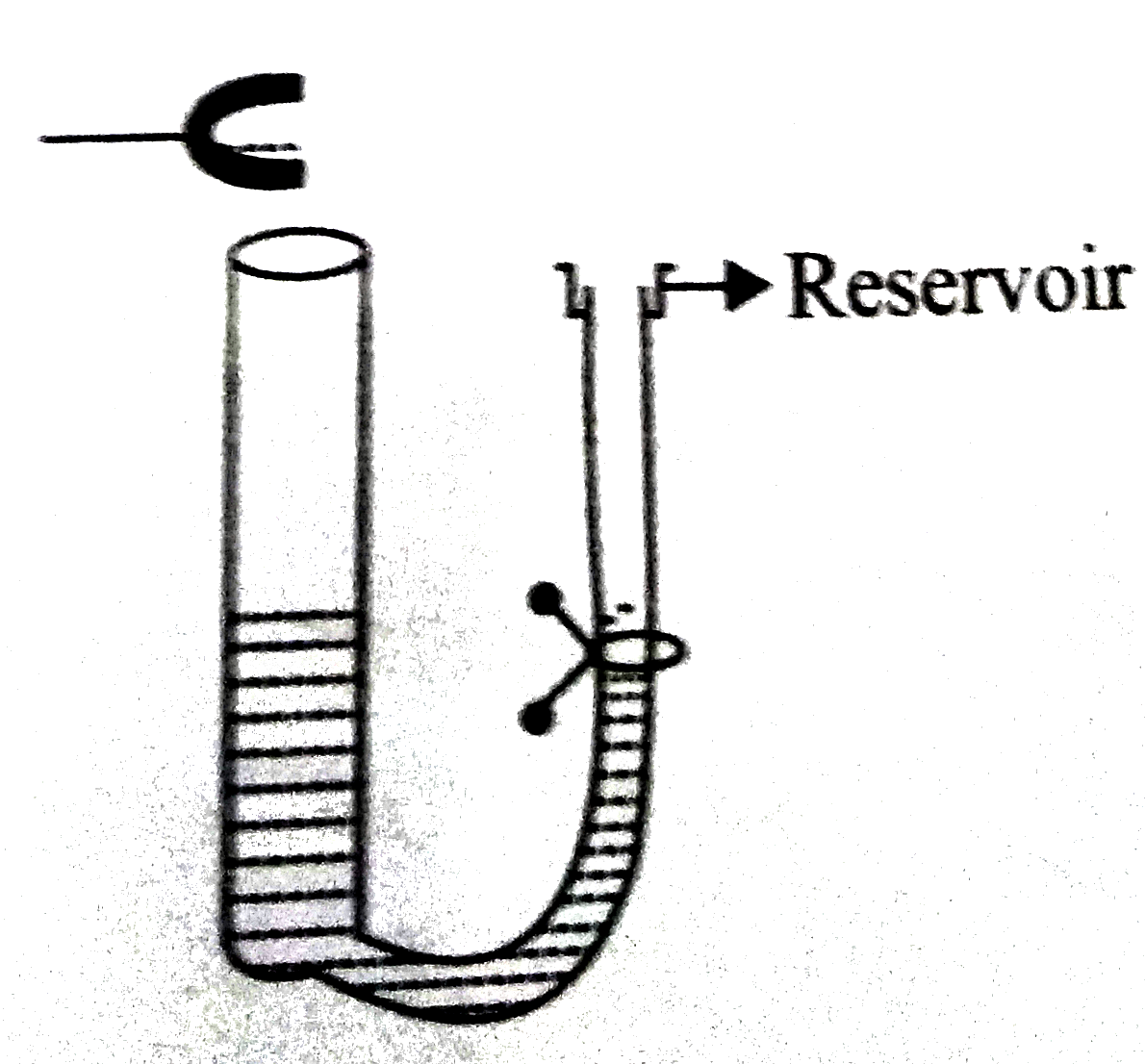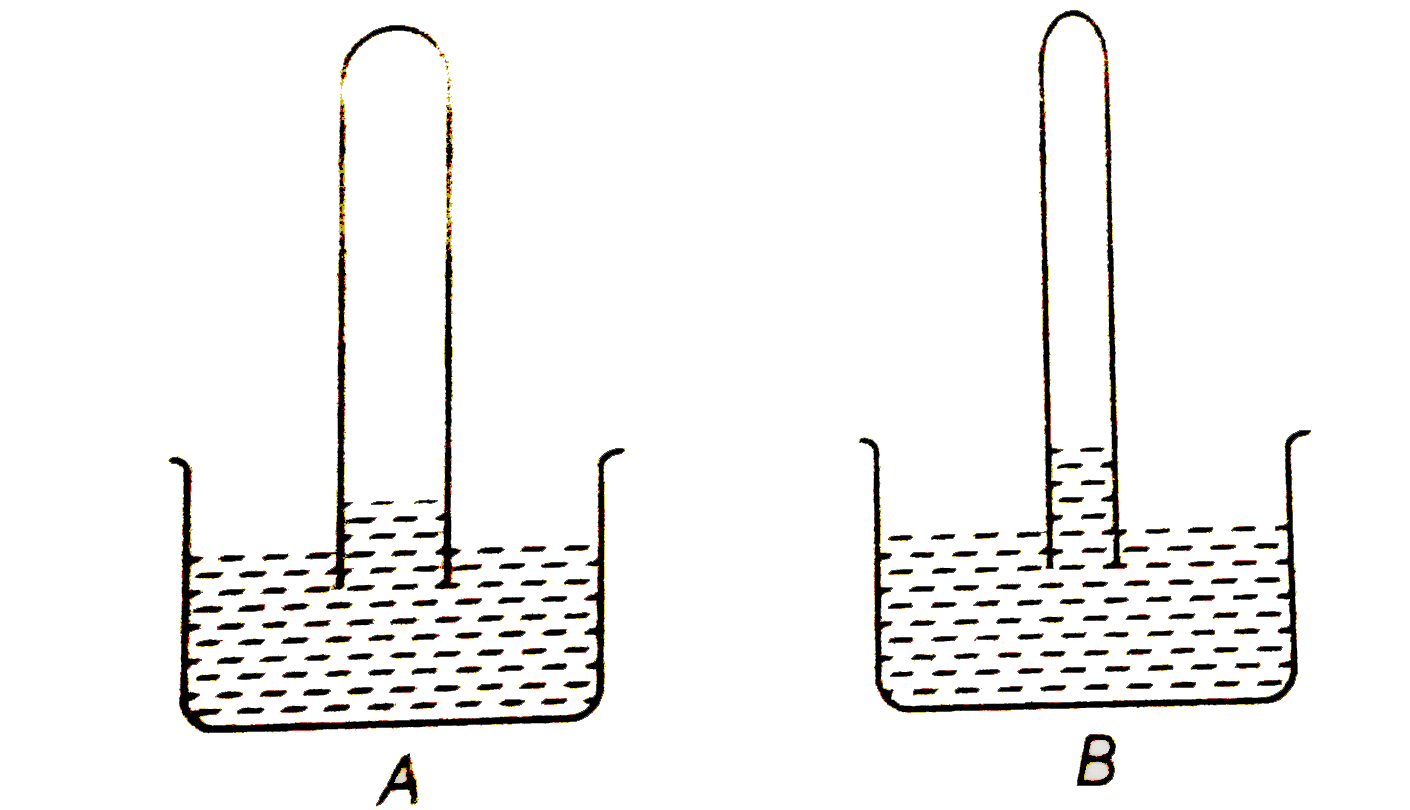An empty glass bottle is fitted with a narrow tube at its mouth. The open end of the tube is kept in a beaker containing water. When the bottle is heated, bubbles of air are seen escaping into the water. Explain the reason.
Step-by-Step Solution:
1. Understanding the Setup: We have an empty glass bottle with a narrow tube attached to its mouth. The other end of the tube is submerged in a beaker filled with water.
2. Heating the Bottle: When the bottle is heated, the temperature of the air inside the bottle increases.
3. Expansion of Air: As the temperature rises, the air molecules inside the bottle gain energy. This increase in energy causes the air molecules to vibrate more vigorously and move apart, leading to an increase in the volume of the air. This phenomenon is known as thermal expansion.
4. Air Pressure Increase: The expansion of the air inside the bottle creates an increase in pressure. Since the bottle is sealed except for the narrow tube, the increased pressure forces the air to move through the tube.
5. Bubbles Forming in Water: As the air travels through the narrow tube and escapes into the beaker of water, it forms bubbles. This is because the air is less dense than water, and when it escapes into the water, it rises to the surface, creating visible bubbles.
6. Conclusion: Therefore, the reason we see bubbles escaping into the water when the bottle is heated is due to the expansion of air inside the bottle, which increases the pressure and forces the air through the tube into the water.
---
Topper's Solved these Questions
- HEATBOOK - ICSECHAPTER - HEATEXERCISE - TEST YOURSELF (NUMERICALS )
7 Videos
- HEATBOOK - ICSECHAPTER - HEATEXERCISE - QUESTIONS
1 Videos
- HEATBOOK - ICSECHAPTER - HEATEXERCISE - TEST YOURSELF (SELECT THE CORRECT)
7 Videos
- FORCE AND PRESSURE : MOTION BOOK - ICSECHAPTER - FORCE AND PRESSURE : MOTION EXERCISE - EXERCISES (SECTION II) (Picture Study)
4 Videos
- LIGHT ENERGYBOOK - ICSECHAPTER - LIGHT ENERGYEXERCISE - EXERCISE (PICTURE STUDY)
10 Videos
Similar Questions
A porpous cup is filled with H2 gas at the atmospheric pressure and is connected to a thin glass tube a vertical position. The second end of the tube is immersed in water below it. After some time, water rises in the glass tube. Explain giving reasons.
View SolutionA capillary tube is dipped in water to a depth and the water rises to a height h(<l) in the capillary tube. The lower end of the tube is closed in water by putting a lower over it. The tube is now taken out and the thumb is removed from the lower end and it kept open. The length of liquid column in the tube will be

View Solution
Knowledge Check
A tuning fork vibrating with a frequency of 500 Hz is kept close to the open end of a tube filled with water, as shown in figure. The water level in the tube is gradually lowered When the water level is 17 cm below the open to open end, maximum intensity of sound is heard. If the room temperature is 20∘ C, the speed of sound in air at the temperature is
 A1. 330ms−1B2. 340ms−1C3. 350ms−1D4. 360ms−1
A1. 330ms−1B2. 340ms−1C3. 350ms−1D4. 360ms−1
If you are provided with two tubes (A and B), where one is narrow and the other is relatively wider and if both are immersed in a beaker containing water as shown in the figure.

Why does B show higher water rise than A ?
View SolutionWhen air is blown from mouth into a test - tube containing lime water, the lime water turned milky due to the presence of
View SolutionA narrow capillary tube when dipped in beaker containing water, the rise is 20 cm . If the area of cross section of the bore is reduced to (1/4)th calue , water will rise to a height of
View SolutionA vertical glass capillary tube, open at both ends, contains some water. Which of the following shapes may not be taken by the water -in the tube?
View SolutionA capillary tube is dipped in water vertically. It is long enough for the water to rise to the maximum height h in the tube. The length of portion immersed in water is I<h. The lower end of the tube is closed and then the tube is taken out and opened again. Will all the water flow out of tube? Explain.
View SolutionA glass tube 1.5m long and open at both ends, is immersed vertically in a water tank completely. A tuning fork of 660 Hz is vibrated and kept at the upper end of the tube and the tube is gradually raised out of water the total number of resonances heard before the tube comes out of water taking velocity of sound air 330m/s is
View SolutionThe lower end of a clean glass capillary tube of internal radius 2×10−4m is dippled into a beaker containing water . The water rise up the tube to a vertical height of 7×10−2m above its level in the beaker. Calculate the surface tension of water. Density of water = 1000kgm−3,g=10ms−2 .
View Solution
